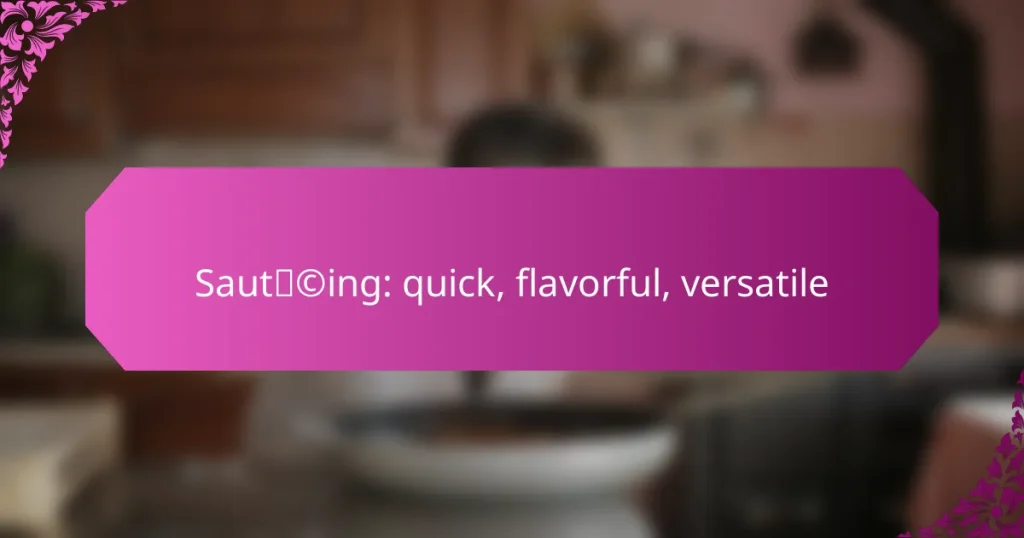Sautéing is a quick and versatile cooking technique that enhances the natural flavors of ingredients while maintaining their texture. By using high heat and minimal oil, busy cooks can prepare delicious meals in no time, making it an ideal method for utilizing fresh, local produce. With the right tools and techniques, sautéing can transform simple ingredients into flavorful dishes that impress.
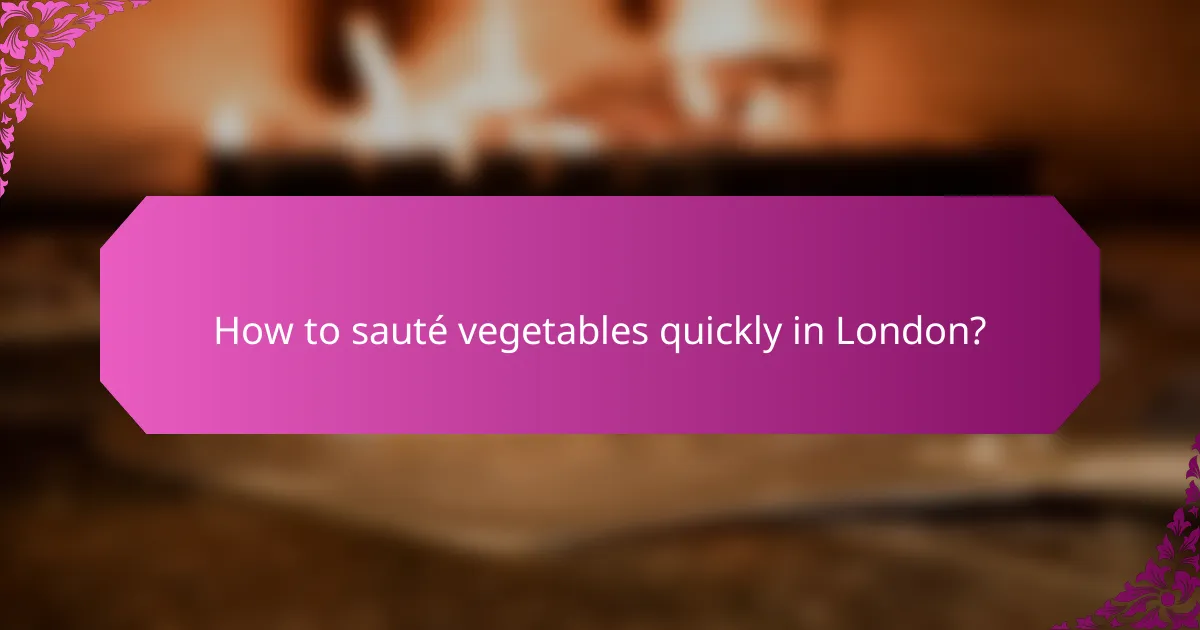
How to sauté vegetables quickly in London?
Sautéing vegetables quickly in London involves using high heat and minimal oil to achieve a flavorful result in a short amount of time. This technique is perfect for busy cooks looking to prepare healthy meals using fresh, local produce.
High heat for quick cooking
Using high heat is essential for sautéing vegetables quickly. This method allows for rapid cooking while preserving the vegetables’ texture and nutrients. Aim for a temperature around 200-220°C (400-425°F) to achieve a nice sear without overcooking.
Ensure your pan is preheated before adding the vegetables. A hot pan helps to lock in flavors and prevents sticking. Stir frequently to promote even cooking and avoid burning.
Use olive oil for flavor
Olive oil is an excellent choice for sautéing due to its rich flavor and health benefits. Use extra virgin olive oil for the best taste, as it has a higher smoke point and retains more nutrients. A tablespoon or two should suffice for most vegetable servings.
Be mindful not to overheat the oil, as this can lead to a bitter taste. If you’re cooking at high temperatures, consider using a blend of olive oil and another oil with a higher smoke point, like avocado oil, for better results.
Choose seasonal vegetables
Selecting seasonal vegetables not only enhances flavor but also supports local farmers and reduces environmental impact. In London, popular seasonal choices include asparagus in spring, tomatoes in summer, and root vegetables in autumn.
When sautéing, cut vegetables into uniform sizes to ensure even cooking. For example, slice bell peppers and zucchini into similar thicknesses to achieve consistent tenderness. This approach maximizes flavor and minimizes cooking time.
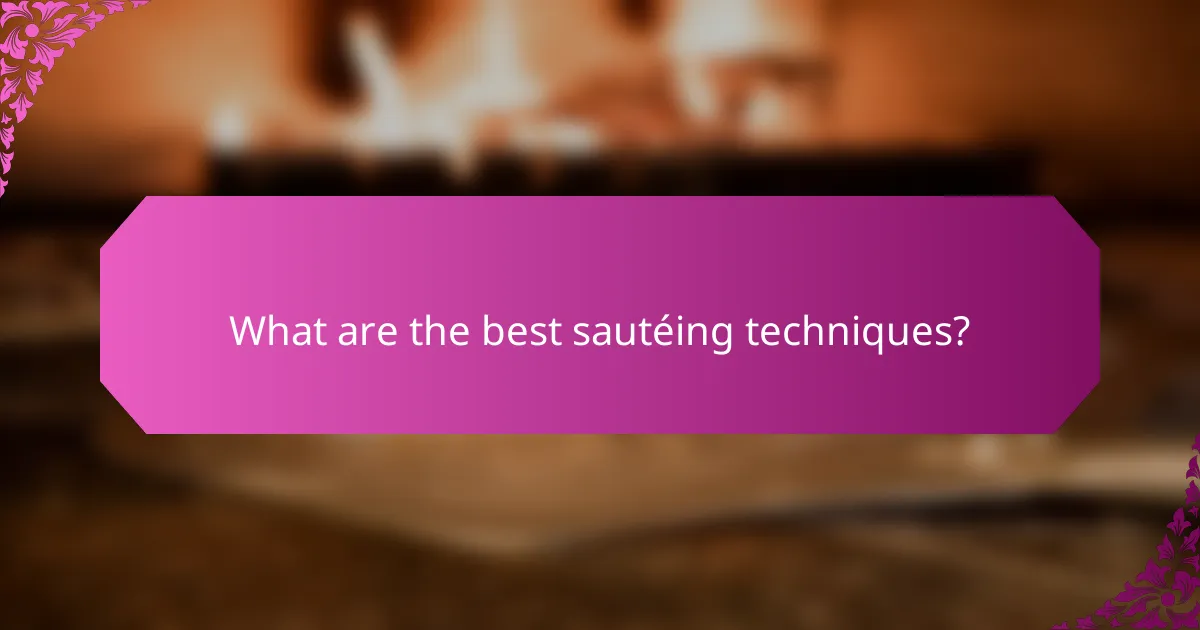
What are the best sautéing techniques?
The best sautéing techniques focus on high heat and quick cooking to enhance flavor and texture. Key methods include stir-frying for even cooking and deglazing to capture rich flavors from the pan.
Stir-frying for even cooking
Stir-frying involves cooking food quickly over high heat while continuously stirring. This technique ensures that ingredients, such as vegetables and proteins, cook evenly without burning. A wok is ideal for this method due to its shape and heat distribution.
When stir-frying, cut ingredients into uniform sizes to promote even cooking. Use a small amount of oil, typically around 1-2 tablespoons, and add ingredients in stages based on their cooking times—harder vegetables first, followed by softer ones.
Deglazing for enhanced flavor
Deglazing is the process of adding liquid to a hot pan to loosen and dissolve browned bits of food stuck to the bottom. This technique enhances the flavor of sauces and dishes by incorporating these caramelized bits, known as fond.
To deglaze, after sautéing, remove the cooked ingredients and add a liquid such as broth, wine, or vinegar to the pan. Scrape the bottom with a wooden spoon to lift the fond. Allow the liquid to reduce slightly, concentrating the flavors before adding back the sautéed ingredients.

What equipment do I need for sautéing?
To sauté effectively, you need a few essential pieces of equipment that enhance the cooking process and ensure flavorful results. The right tools can make sautéing quicker and more efficient, allowing for better control over heat and food movement.
Non-stick skillet for easy release
A non-stick skillet is ideal for sautéing because it prevents food from sticking, making it easier to flip and stir ingredients. This type of cookware allows you to use less oil, which can lead to healthier meals without sacrificing flavor.
When choosing a non-stick skillet, look for one with a sturdy base that distributes heat evenly. Sizes typically range from 20 to 30 centimeters in diameter, which is suitable for most sautéing tasks. Avoid using metal utensils to prolong the life of the non-stick coating.
Wooden spatula for stirring
A wooden spatula is a practical tool for sautéing as it is gentle on non-stick surfaces and allows for effective stirring without scratching. The flexibility of wood helps in scraping the bottom of the skillet to release any browned bits, enhancing the dish’s flavor.
When selecting a wooden spatula, choose one with a comfortable grip and a shape that suits your cooking style. Regularly check for wear and tear, and replace it if it shows signs of damage to maintain hygiene and cooking performance.
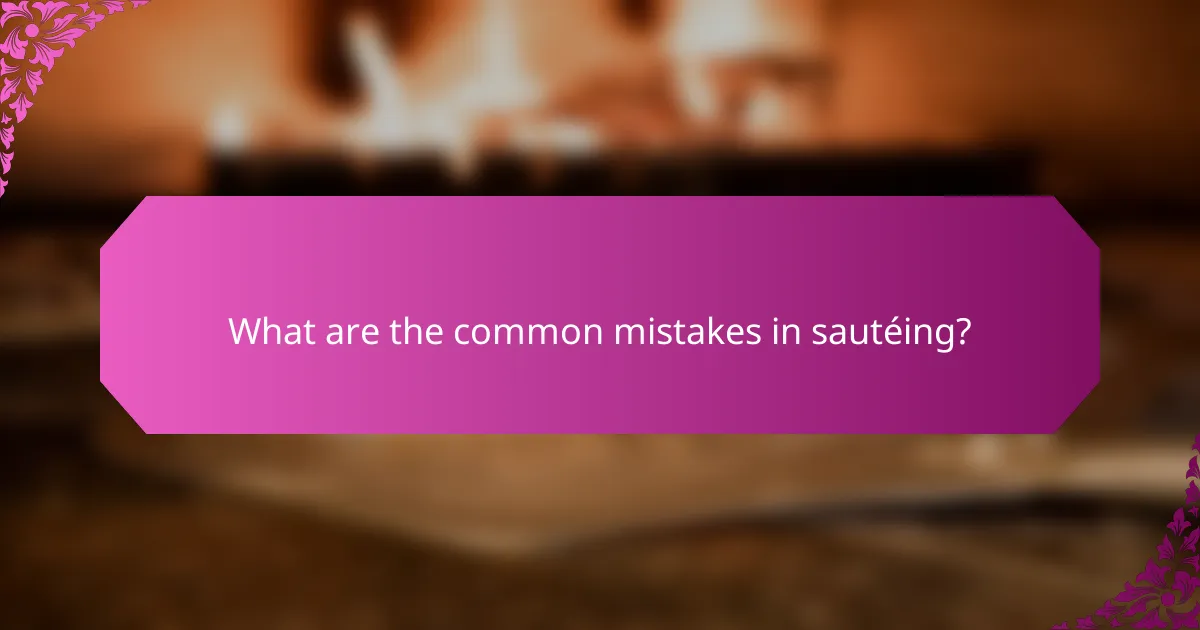
What are the common mistakes in sautéing?
Common mistakes in sautéing include overcrowding the pan and using low heat. These errors can lead to uneven cooking and a lack of flavor development, undermining the effectiveness of this quick cooking technique.
Overcrowding the pan
Overcrowding the pan prevents food from browning properly, as the moisture released from the ingredients creates steam instead of allowing them to sear. This can result in a soggy texture rather than the desired crispness.
To avoid this mistake, cook in smaller batches. For instance, if you’re sautéing vegetables, aim for a single layer in the pan, allowing space between each piece. If necessary, divide your ingredients and sauté them sequentially.
Using low heat
Using low heat can hinder the sautéing process, as it doesn’t allow for the Maillard reaction, which is essential for developing rich flavors and appealing colors. Low temperatures can lead to longer cooking times and a lack of caramelization.
For effective sautéing, use medium to medium-high heat. This ensures that your ingredients cook quickly while achieving the right texture and flavor. A good rule of thumb is to heat the pan until it’s hot enough that a drop of water sizzles upon contact.
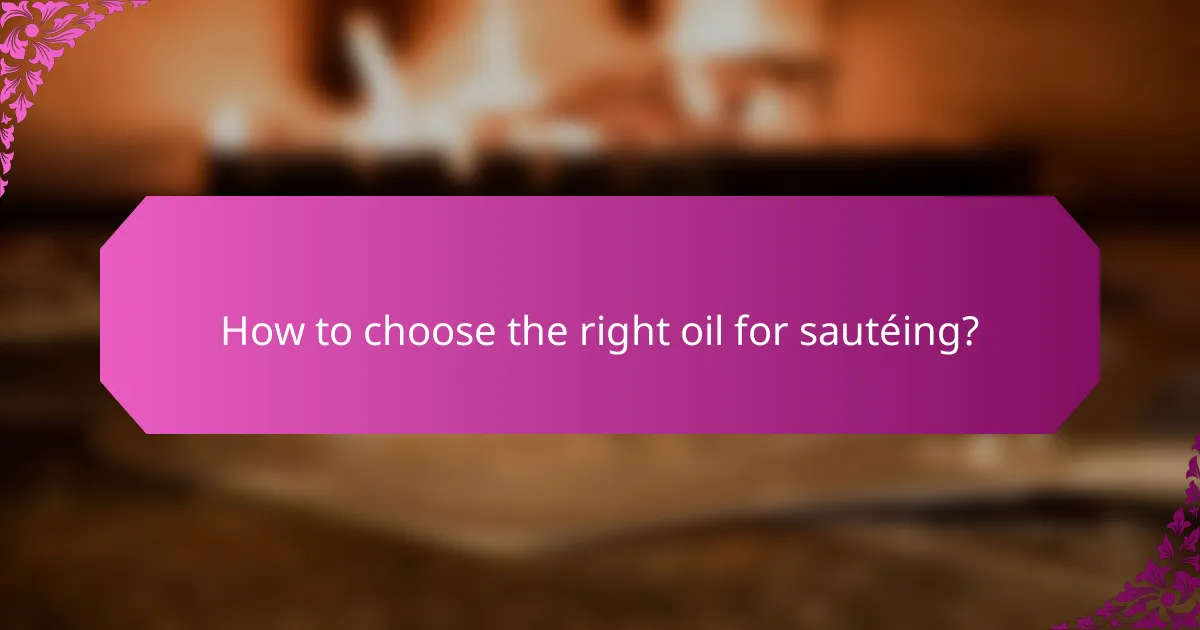
How to choose the right oil for sautéing?
Selecting the right oil for sautéing is crucial for achieving the desired flavor and cooking performance. Consider the oil’s flavor profile, smoke point, and health benefits to make an informed choice.
Olive oil for flavor
Olive oil is renowned for its rich flavor, making it a popular choice for sautéing vegetables and proteins. Extra virgin olive oil, in particular, offers a robust taste that enhances dishes, especially Mediterranean cuisine.
When using olive oil, keep in mind its smoke point, which typically ranges from 375°F to 410°F (190°C to 210°C). This makes it suitable for medium-heat sautéing, but avoid overheating to preserve its flavor and health benefits.
Canola oil for high smoke point
Canola oil is an excellent option for sautéing due to its high smoke point, around 400°F to 450°F (204°C to 232°C). This allows for cooking at higher temperatures without burning, making it ideal for quick sautéing techniques.
Additionally, canola oil has a neutral flavor, which means it won’t overpower the other ingredients in your dish. It’s a versatile choice for various cuisines, especially when you want the focus to remain on the main ingredients rather than the oil itself.

What are the health benefits of sautéing?
Sautéing offers several health benefits, primarily by preserving nutrients and reducing fat content compared to other cooking methods. This technique allows for quick cooking while maintaining the vibrant flavors and textures of ingredients.
Retains nutrients in vegetables
Sautéing helps retain essential nutrients in vegetables, as the cooking time is short and the heat is moderate. This method minimizes exposure to water and prolonged cooking, which can lead to nutrient loss. For instance, sautéing spinach or broccoli for just a few minutes can keep vitamins A and C intact.
To maximize nutrient retention, use a small amount of healthy oil, such as olive oil, and avoid overcooking. Aim for a bright color and slight tenderness in vegetables, which indicates they are cooked but still nutritious.
Lower fat compared to frying
Sautéing typically uses less oil than frying, making it a healthier option for cooking. While frying often requires enough oil to submerge the food, sautéing only needs a thin layer to coat the pan. This can significantly reduce the overall fat content of the dish.
For example, when sautéing chicken or fish, you might use just a tablespoon of oil instead of several cups. This not only cuts calories but also allows the natural flavors of the ingredients to shine through without the heaviness of excess fat.
